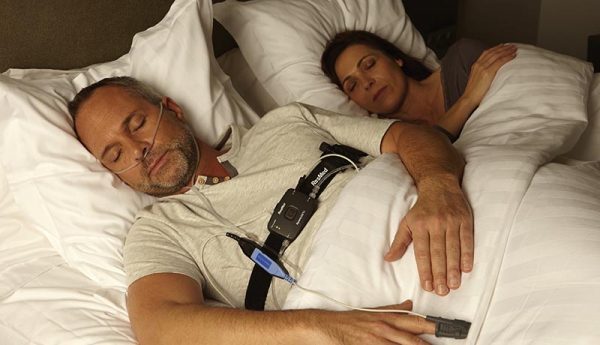Health
Sleep Apnea Tests and Diagnosis
If you have symptoms of sleep apnea, your doctor may ask you to have a sleep apnea test, called a polysomnogram. This may be done in a sleep disorder center or even at home.
A polysomnogram — or sleep study — is a multiple-component test that electronically transmits and records specific physical activities while you sleep. The recordings are analyzed by a qualified sleep specialist to determine whether or not you have sleep apnea or another type of sleep disorder.
If sleep apnea is determined, you may be asked to do further sleep testing in order to determine the best treatment option.
What to Expect During a Sleep Study On the night of your sleep study if you are in a sleep center lab, you will be assigned to a private bedroom in the sleep center or hospital. Near the bedroom will be a central monitoring area, where the technicians monitor sleeping patients. You will be hooked up to equipment that may look uncomfortable. However, most people fall asleep with little difficulty. Similar, more portable equipment is now available for home testing, especially for less complicated cases or situations.
Equipment Used for a Sleep Study During a sleep study, surface electrodes will be put on your face and scalp and will send recorded electrical signals to the measuring equipment. These signals, which are generated by your brain and muscle activity, are then recorded digitally. Belts will be placed around your chest and abdomen to measure your breathing. A bandage-like oximeter probe will be put on your finger to measure the amount of oxygen in your blood.
Other Tests and Equipment Used for Sleep Apnea. EEG (electroencephalogram) to measure and record brain wave activity. EMG (electromyogram) to record muscle activity such as face twitches, teeth grinding, and leg movements, and to determine the presence of REM stage sleep. During REM sleep, intense dreams often occur as the brain undergoes heightened activity. EOG (electro-oculogram) to record eye movements. These movements are important in determining the different sleep stages, particularly REM stage sleep. ECG (electrocardiogram) to record heart rate and rhythm. Nasal airflow sensor to record airflow. Snore microphone to record snoring activity.
What to Expect During a Sleep Study On the night of your sleep study if you are in a sleep center lab, you will be assigned to a private bedroom in the sleep center or hospital. Near the bedroom will be a central monitoring area, where the technicians monitor sleeping patients. You will be hooked up to equipment that may look uncomfortable. However, most people fall asleep with little difficulty. Similar, more portable equipment is now available for home testing, especially for less complicated cases or situations.
Equipment Used for a Sleep Study During a sleep study, surface electrodes will be put on your face and scalp and will send recorded electrical signals to the measuring equipment. These signals, which are generated by your brain and muscle activity, are then recorded digitally. Belts will be placed around your chest and abdomen to measure your breathing. A bandage-like oximeter probe will be put on your finger to measure the amount of oxygen in your blood.
Other Tests and Equipment Used for Sleep Apnea. EEG (electroencephalogram) to measure and record brain wave activity. EMG (electromyogram) to record muscle activity such as face twitches, teeth grinding, and leg movements, and to determine the presence of REM stage sleep. During REM sleep, intense dreams often occur as the brain undergoes heightened activity. EOG (electro-oculogram) to record eye movements. These movements are important in determining the different sleep stages, particularly REM stage sleep. ECG (electrocardiogram) to record heart rate and rhythm. Nasal airflow sensor to record airflow. Snore microphone to record snoring activity.



